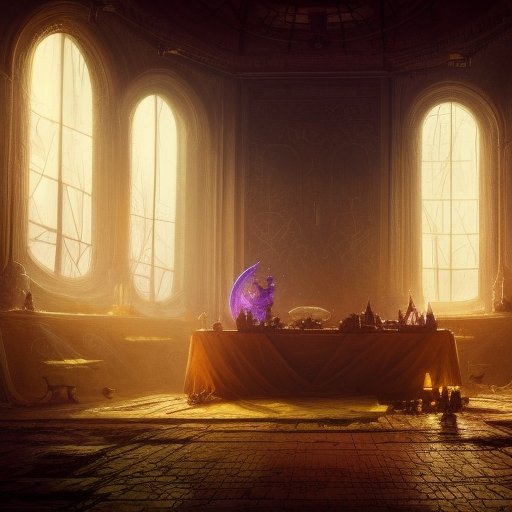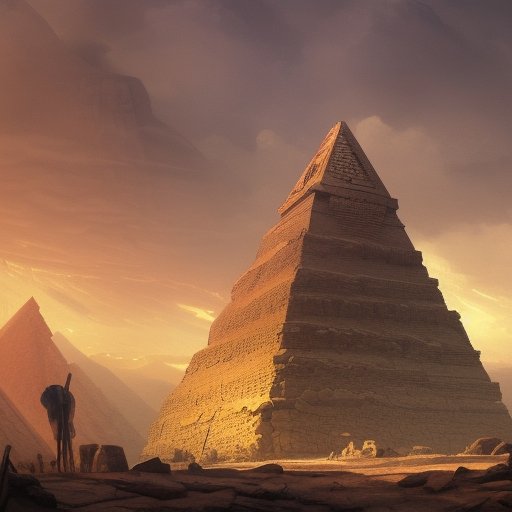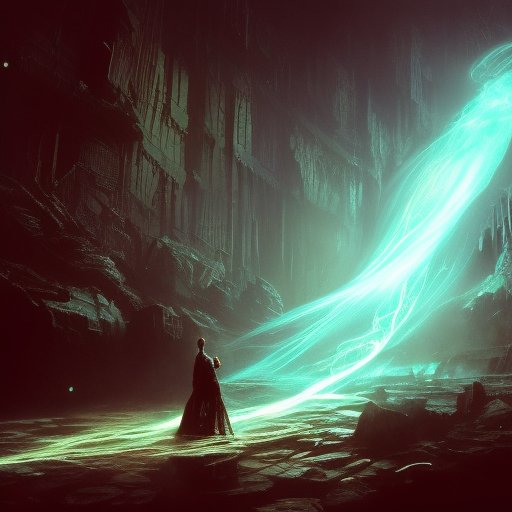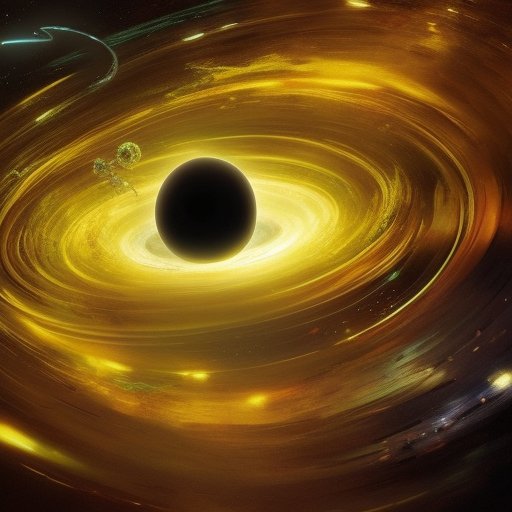
Building life has always been the ultimate dream of scientists and fiction writers alike. The Secret Ingredient for life-building has been a mystery for centuries, and its discovery has been a matter of great speculation. But what is the Secret Ingredient? In this article, we explore what makes life-building possible, from theoretical possibilities to practical applications, and the ethical concerns it raises. We discuss the potential of the Secret Ingredient in microorganisms, megastructures, and even saving humanity. The future of life-building is upon us. Join us as we discover the possibilities that lie ahead.
I. Introduction
Ahoy, space lovers! Today, we delve into the mysterious world of building life. Yes, you heard it right! Artificial life! Some folks would argue that playing God has never been so rewarding. But others would insist that it’s a slippery slope, a path to damnation.

It’s a topic that has divided sci-fi lovers for ages, and it’s about time we gave it a closer examination. Does man have the right to create life from scratch? Will it be a boon or a curse? Questions like these keep the finest minds of the cosmos up at night.
But where does one even begin? What ingredient does one use to build life? We’ve been hunting for the answer since the birth of science fiction, and one thing is certain – it’s the most elusive answer in the galaxy.
The quest for the secret ingredient is like seeking out the Holy Grail, a desperate search for answers that never seem to come. But let’s not lose hope, my fellow space cadets! Our thirst for knowledge shall be the mighty weapon that drives us forward.
This is a topic that concerns not just the scientific community but every sentient being. The ethical and philosophical implications of artificially creating life are massive, and we’re just starting to scratch the surface of what it could mean for the future of our species.
As we dive into this complex and profound topic, let’s remember that we’re all in this together. So buckle up, hold tight, and let’s explore the mysteries of the building blocks of life.
II. The Search for the Secret Ingredient
The search for the secret ingredient to building life has been a never-ending hunt. We’ve scoured every corner of the galaxy, from the icy moons of Jupiter to the barren deserts of Mars.

Scientists and storytellers alike have dreamt of creating life in their own image, but it seems that the recipe for such a feat is locked away, hidden from prying eyes. The key to unlocking this mystery continues to elude us, but we refuse to give up.
For centuries, philosophers and pioneers have postulated that life is more than just physical matter. It somehow emerges from some mystical force that we have yet to understand. We’ve tried mixing elements, combining chemicals, and manipulating energy, but the spark of life remains elusive.
Some have theorized that the secret ingredient is something we cannot see or touch, something that lurks in the between spaces. Others believe that the answer is buried deep within the microscopic structures of our universe, waiting to be discovered.
Despite decades of exploration, our search has been fruitless. However, we’ve found hope in the advances of technology that have allowed us to peer deeper into the cosmos than ever before. We’re closer to understanding the universe’s secrets, and with each new discovery, we gain new insights into what makes life possible.
The search may be long and arduous, but it’s a quest worth undertaking. Who knows what we will discover, what mysteries will unravel, once we untangle this Holy Grail of life. One thing is for certain – the journey is just as important as the destination.
III. Theoretical Possibilities
What would happen if we found the secret ingredient? Endless possibilities await, like a treasure trove of incredible discoveries waiting to be unearthed. The mind boggles at the potential ramifications.

First off, we could potentially create life beyond our wildest dreams. Entire ecosystems, populated with all manner of weird and wonderful creatures, could come into existence. Imagine pristine planets full of dome cities, with cascading waterfalls, and floating gardens. The possibilities are endless, like space itself.
But that’s not all that’s at stake here. The secret ingredient could also have therapeutic applications. Think about it, we could create custom-made organisms capable of curing stubborn diseases, or even regenerating damaged body parts. With the right technology, we could potentially extend human life for centuries, or even millennia.
And that’s just the tip of the iceberg. With the secret ingredient in our hands, we could engineer organisms that could survive in the harshest environments imaginable. Think about it, space travel would become a lot more bearable if we could create crews that wouldn’t suffer the ill effects of prolonged exposure to zero-gravity or radiation.
But there’s always a catch. The secret ingredient could potentially be used for nefarious deeds. Think of the doomsday scenarios that could unfold if we created organisms designed to be lethal, machines that replicate at an alarming rate, or viruses that kill indiscriminately. To wield the power to create life is a heavy responsibility that must not be taken lightly.
Theoretical possibilities are abundant, and it’s up to us as ethical beings to decide which route to take. Will we use the secret ingredient for the betterment of all, or will we be seduced by the darker side of our nature? It’s a slippery slope either way, and the stakes are higher than ever.
IV. Practical Applications
The practical implications of building life are truly out of this world. From microorganisms capable of cleaning up nuclear waste to megastructures designed to house entire planetary populations, the possibilities are endless.

With the secret ingredient, we could create life that can withstand conditions previously thought impossible. Imagine, being able to colonize hostile planets, or build structures in space that don’t require artificial gravity. With life built from scratch, we could create a new world, a new home for humanity.
But the potential applications go far beyond finding a new spot for humanity to call home. With the right tweaks, we could create organisms capable of producing clean energy or synthesizing food. We could even develop a new generation of medical treatments, using life instead of chemicals to treat everything from cancer to the common cold.
Of course, there are dangers to consider. The creation of new organisms could lead to unintended consequences, with unforeseen ecological impacts. But with proper caution and preparation, these risks can be minimized. The potential benefits of building life are simply too great to be ignored.
And it’s not just limited to practical applications either. Building life could lead to an entirely new era of scientific discovery. With new organisms to study, we could revolutionize our understanding of biology and genetics. Who knows what other secrets of the universe could be unlocked with this new frontier of science?
V. Ethical Concerns
When it comes to building life from scratch, ethical quandaries are bound to arise. Who are we to play God? Are we seeking to save humanity or just to fulfill our own desires?

Some argue that we should trust the natural course of evolution, that we have no right to meddle with the cosmos. Others point to synthetic life as the key to unlocking immortality and disease eradication.
But the consequences of our actions must be considered. What if we accidentally create a life form that’s dangerous or uncontrollable? What if our hubris leads to the downfall of our species?
As we move closer to creating life, we must question our motivations. Are we doing it for the greater good or just for personal gain? Who will benefit, and who will be left behind?
Questions of morality also arise. Will our creation be considered a slave or sentient being? Will it have rights and autonomy? Who decides its purpose and fate?
And what of the philosophical implications? If we create life, what does it say about our own existence? Are we just a product of chance, or do we have a grander purpose?
In the end, the decision to create life is not one to be taken lightly. The consequences are vast, and the ramifications will ripple through the cosmos for ages to come. It’s up to us to decide whether playing God is worth the price.
VI. The Future of Life-building
The future is a funny thing, isn’t it? We can predict, we can dream, but we can never be sure what’s in store for us. The same goes for the secret ingredient for building life. What’s going to come next? How will it evolve over time? Here are some possible routes we may take:

First and foremost, we’re going to see how far we can push the limits of this technology. It’s not going to be a smooth ride, mind you. Like any new game-changing invention, we’ll encounter challenges and obstacles that will make us question whether it’s worth pursuing. But we’ll push on. We’ll make the impossible possible. We’ll create new forms of life, unlike any the universe has seen before.
We’ll also have to confront ethical questions that will bold us over, trying to stay ahead of them, trying not to get stuck in a debate that seems to go on eternally. There will be disagreements and attitudes that will slow us down. But there will also be a shining light, an ideal that everyone will embrace, and once that happens, we’ll be unstoppable.
One of the most exciting prospects is a future that doesn’t involve any form of current life. That’s right – a future that’s entirely synthetic. We’ll create living beings that don’t need food, air, or water to survive. We’ll create life without the chains of nature weighing it down. It sounds like a pipe dream, right? But who knows?
Whatever route we take, one thing is certain – the future of life-building is going to be epic. We’re going to shape the future in ways that no one could have ever predicted. We’re going to create new and astounding things, and it’s going to be a wild, incredible ride.






